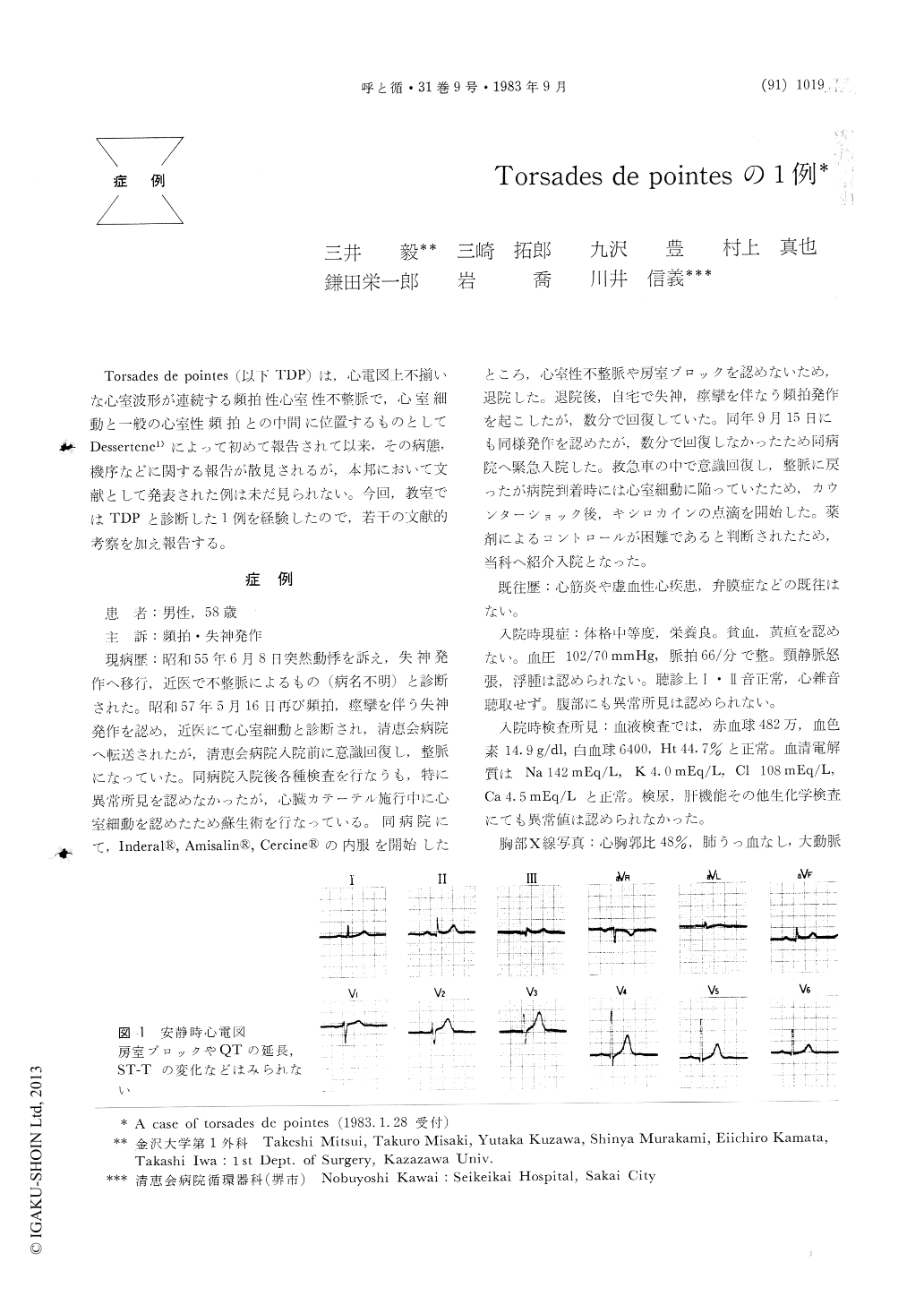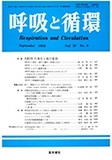Japanese
English
- 有料閲覧
- Abstract 文献概要
- 1ページ目 Look Inside
Torsades de pointes (以下TDP)は,心電図上不揃いな心室波形が連続する頻拍性心室性不整脈で,心室細動と一般の心室性頻拍との中間に位置するものとしてDessertene1)によって初めて報告されて以来,その病態,機序などに関する報告が散見されるが,本邦において文献として発表された例は未だ見られない。今回,教室ではTDPと診断した1例を経験したので,若干の文献的考察を加え報告する。
We experienced a patient with an atypical ventricular tachycardia called torsades de pointes.
Case was a 57-yeae-old man with an episode of tachycardia and syncopal attack on 6-8-1980. On 5-16-1982, he again developed tachycardia with syncopal attack, and he was found ventricular fibrillation at his neighboring hospital and transfered to Seikeikai Hospital. He underwent routine and circulatory examinations, but no abnormal findings were observed. He discharged because the tachycardia was controlled well by medication.
Though he sometimes experienced the same attack at home, always returned to basal rhythm spontaneously within 3-4 minutes. Three months later, this attack continued over 5 minutes, so he admitted emergently again. ECG at arrival revealed ventricular fibrillation and counter shock was necessary for resuscitation. He was introduced to our department for closer examination.
No abnormal findings were observed in serum electrolytes, blood cell counts, and other routine laboratory data. ECG at rest revealed regular sinus rhythm with 56/min, heart rate. R-R interval was 0.18 sec, QRS complex was 0.08 sec, Q-T interval was 0.40 sec. No ST-T change was recognized. ECG at attack revealed polymorphous ventricular tachycardia. The amplitude, and to some extent the shape of QRS complexes, continuously and progressively varied, and this attack terminated spontaneously. Cardiac catheterization showed normal intracardiac pressures and normal left and right ventrigram. Electrophysiological studies were performed 2 months later. The A-H interval of the His bundle electrogram was 70 msec, and H-V interval was 80msec. Utilizing ventricular stimulus technique, no tachycardia was induced. This arrhy-mia charachterized by paroxysms of ventricular tachycardia in which the QRS morphology shows alternating.
Torsades de pointes was first described in detail by Dessertenne, 1966. It is characterized by rapid and irregular paroxysms and progressively varying QRS amplitude and polarity. This attack tends to occur in the setting of electrolytes disturbance in particular hypokalemia, hypomagnesemia, Q-T prolongation, antiarrhythmic drug therapy and acute ischemia. Additionally, it can also occur without these abnormalities.
We detailed in this report, one case of torsades de pointes and some reviews about this characteristic arrhythmia. Our case has experienced no tachycardia after discharge from our hospital.

Copyright © 1983, Igaku-Shoin Ltd. All rights reserved.


